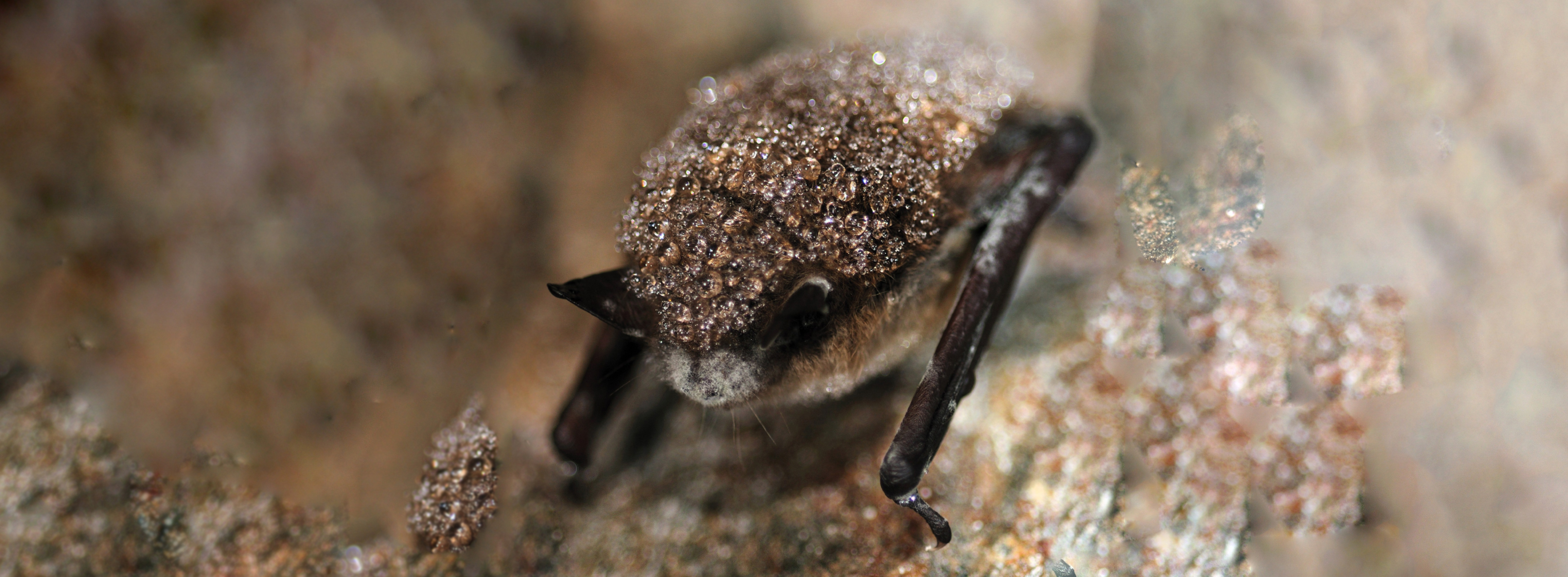Why are Bats in Danger?
Of the 8 species of bats found in Ontario, 4 are listed as Provincially and/or Federally Endangered.
This is largely due to persecution and fear, habitat destruction, White-Nose Syndrome, and wind turbines. Though data on population sizes and distribution is not complete, the current high bat mortality rate is of major concern due to their low reproductive rates.

White-Nose Syndrome (WNS)
A greater threat to hibernating bat species, White-Nose Syndrome (WNS) is a condition where white fungus (Pseudogymnoascus destructans, P. destructans) grows on a bat’s bare skin; predominantly face, ears, and wings. While there are no known health risks of this fungus to humans, it can be unknowingly transferred by humans to new locations and bat populations. The P. destructans fungus causes irritation that disrupts bats’ hibernation which causes them to burn up fat reserves, leading to emaciation and dehydration. WNS has killed millions of bats in North America, decimating 90-100% of some populations.
The Northern Long-eared Bat, Little Brown Myotis, and the Tricolored Bat appear the most strongly affected. The P. destructans fungus has no known cure. Researchers are currently working on effective medications, vaccinations, and methods to control the spread.
Wind Turbines
Harnessing the power of wind has been enthusiastically explored as a green energy source, but research now shows that the current design of wind turbines holds a great threat to some migrating wildlife. Bat mortality rates at wind turbine facilities is in the thousands annually, and highest during migration and periods of low wind speeds. Powering down turbines during this high-risk, low-energy collection period is proving to be an effective mitigation strategy, allowing the continued development of a sustainable resource while protecting a key population.
How can you Help Bats?
- Avoid disturbing bats by only exploring designated tourist caves, not mines or empty caves.
- Report strange bat behaviour, such as when they are active during the day or in the winter, to a wildlife rehabilitation center.
- Monitor a bat population through programs such as Neighbourhood Bat Watch.
- Protect bat habitat; open forests with dead trees; wetlands that act as feeding-grounds.
- Support bat research.
- Put up bat boxes. Learn about Bat Boxes, including how to building and installation at the link below.

 Our Supporters:
Our Supporters:












